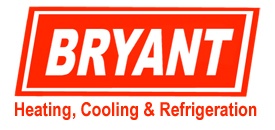5 Budget-Friendly Ways to Boost Furnace Efficiency
Boost furnace efficiency on a budget by installing a programmable thermostat for precise temperature control, sealing air ducts to prevent energy loss, and regularly replacing filters to maintain ideal airflow. Schedule professional maintenance services for system longevity and efficiency upgrades, ensuring consistent warmth while reducing energy consumption. Consider upgrading insulation for cost-effective improvements in maintaining indoor temperatures and heat retention. These strategic upgrades offer a budget-friendly approach to maximizing energy savings and enhancing comfort in your home’s heating system.
Key Points
- Install a programmable thermostat for precise temperature control and reduced energy waste.
- Seal air ducts to prevent heat loss and improve furnace performance.
- Regularly replace filters to maintain airflow and increase efficiency.
- Schedule professional maintenance to identify issues and optimize system efficiency.
- Upgrade insulation to reduce heat loss, maintain consistent temperatures, and boost furnace efficiency.
Programmable Thermostat Installation
Installing a programmable thermostat can considerably improve the efficiency of a furnace. By allowing precise control over temperature settings throughout the day, users can enhance their heating system to operate only when needed, resulting in significant energy savings. The key to maximizing these benefits lies in proper thermostat programming.
Thermostat programming involves setting different temperature levels for various times of the day to align with your schedule. For example, lowering the temperature when you are away at work or asleep can lead to substantial cost reductions. Programming the thermostat to automatically adjust settings can guarantee comfort while minimizing energy waste.
To achieve ideal energy savings, it is essential to understand the programming features of your thermostat. Most programmable thermostats offer multiple daily settings, allowing customization based on your routine. By utilizing these features effectively, you can create a heating schedule that maximizes efficiency without sacrificing comfort. Proper thermostat programming is a simple yet powerful tool for enhancing furnace efficiency and reducing energy costs.


Air Duct Sealing
To enhance the performance of a furnace and further improve energy efficiency, addressing air duct sealing is a critical step. Air ducts are essential components of a heating system, responsible for distributing heated air throughout a home. However, duct leakage can lead to significant energy loss, reducing the efficiency of the heating system.
When air ducts have leaks or gaps, heated air intended for rooms can escape into unconditioned spaces like attics or basements. This results in the furnace working harder to maintain the desired temperature, leading to increased energy consumption and higher utility bills. By sealing these ducts properly, homeowners can prevent such energy losses and improve the overall efficiency of their heating system.
Common methods for sealing air ducts include using mastic sealant or metal tape to cover gaps and leaks. Professional duct sealing services can also be employed for more extensive ductwork. Regular inspection and maintenance of air ducts are essential to guarantee peak performance and energy efficiency in a home’s heating system.
Regular Filter Replacement
Regular filter replacement plays an essential role in maintaining the ideal performance and efficiency of a furnace. There are different filter types available, including fiberglass, pleated, washable, and electrostatic filters. Dirty filters can obstruct airflow, leading to decreased efficiency and increased energy consumption. Fiberglass filters are cost-effective but need more frequent replacements, while pleated filters offer better filtration but are pricier. Washable filters can be reused after cleaning, providing a more sustainable option. Electrostatic filters use static electricity to capture particles and are washable or disposable. It is vital to check the manufacturer’s recommendations for the specific filter type suitable for your furnace. Regularly inspecting and replacing dirty filters can prevent dust and debris buildup, ensuring ideal airflow and efficiency. By investing in appropriate filter replacements, homeowners can enhance their furnace’s performance while maintaining a budget-friendly approach to improving efficiency.

Professional Maintenance Service
Professional maintenance service is a crucial aspect of guaranteeing the ideal operation and longevity of your furnace. Scheduling regular furnace inspections with a certified technician can help identify any potential issues before they escalate, ultimately improving the efficiency of your system. During these inspections, the technician will perform a thorough evaluation of your furnace, checking for any worn-out components, loose connections, or inefficiencies that could be impacting its performance.
In addition to identifying existing problems, professional maintenance service also includes efficiency upgrades that can further enhance the performance of your furnace. These upgrades may involve adjustments to improve airflow, calibration of the thermostat, or installation of energy-saving components. By investing in these upgrades, you can guarantee that your furnace operates at its peak level, providing consistent warmth while minimizing energy consumption .At Bryant heating and colling, we recommend scheduling a professional furnace tune-up at least once a year.
Insulation Upgrade
Scheduling regular furnace inspections with a certified technician is a proactive step in ensuring peak furnace performance. However, another cost-effective method to enhance furnace efficiency is by upgrading insulation. Insulation plays an important role in maintaining consistent indoor temperatures and reducing heat loss. Conducting energy audits can help identify areas in your home that may benefit from improved insulation.
When considering an insulation upgrade, it is vital to choose the right materials. Common options include fiberglass, cellulose, foam board, and spray foam. Each material has its pros and cons regarding cost, R-value, and installation requirements. Fiberglass is a popular choice due to its affordability, while spray foam offers superior insulation but comes at a higher price point.







